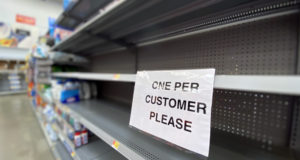China’s Tianqi Lithium, one of the largest lithium battery producers in the world, has made a bid to purchase 24 percent of SQM, Chile’s largest lithium mining company.
Lithium Battery Producer Leads Charge
The U.S. and other lithium importers are expected to lobby Chile’s regulatory agency, CORFO, in an attempt to stop the sale. The proposed purchase is the latest in China’s attempt to corner lithium production worldwide. It should be easy for anyone to understand the reason for the aggressive investment strategy.
Lithium is seen as the future of energy as lithium-ion batteries become a driver in many new technological innovations. These breakthroughs will include many solar and wind energy applications. Lithium batteries have many advantages over traditional AMV batteries. They are dramatically lighter in weight, smaller in size and possess a battery life that is four times longer.
History Of Lithium Battery
Experimentation with lithium goes all the way back to 1912. However, it wasn’t until six decades later that companies began producing and selling the first lithium batteries. The early batteries were not rechargeable, but as primary batteries, they worked by chemical breakdown. These early lithium batteries were predominantly used in hearing aids, electronic watches and other applications which needed small, lightweight batteries.Three separate developments, all of which happened in the 1980s, helped to turn those first lithium batteries into the lithium ion (Li-Ion) rechargeable batteries we know today.
-Development of the LiCoO2 cathode, which serves its function as the positive lead.
-Development of the graphite anode, which finds use as the negative lead.
-Building of the first lithium-ion battery.
Please note the distinct difference between lithium and a lithium-ion battery. Lithium batteries are not rechargeable, while lithium-ion batteries are. Also, not only are lithium-ion batteries rechargeable, but they solve a number of the problems associated with other rechargeable batteries. As a result, lithium battery producer output has shifted to newer technologies.
Tremendous Future Lithium Battery Producers
Developers created the third type of lithium battery, the Lithium-Ion Polymer Battery (Li-Po), during the latter end of the 1990s. This battery differed from the standard Li-Ion battery in that it uses a solid polymer electrolyte, rather than a liquid one.
Since the electrolyte is solid, one can laminate the electrodes and separators together, allowing a soft, flexible wrapping, rather than a hard, metal casing. Because of flexibility, these batteries are the number one choice for portable electronics, such as mobile phones, PDAs, RC aircraft and tablets.
Tesla’s Rising Lithium Battery Demand
Even as the number of independent lithium producers steadily declines, enormous amounts of investment capital are flowing into the remaining lithium producers. SQM’s share price has risen from $13.06 (in July of 2015) to a high of $62.15 (in January of 2018) in the last 2 years. Tianqi Lithium has risen from $6.20 in 2012 to over $60.00 in late 2017.
The lithium battery industry has made it easier to get to off the grid and still have electrical power. Make sure lithium batteries are part of your core survival stash.
 Off The Grid News Better Ideas For Off The Grid Living
Off The Grid News Better Ideas For Off The Grid Living



